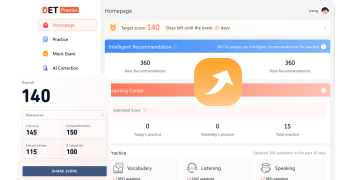Mastering the “Write About the Photo” Section in the Duolingo English Test
The Duolingo English Test has emerged as a pivotal benchmark for non-native speakers aiming to demonstrate their English proficiency. Its convenient online access and quick results make it a favorite among students and professionals seeking admissions or opportunities in English-speaking environments. A unique and challenging component of this test is the “Write About the Photo” section, which gauges a test-taker’s fluency and ability to think on their feet and convey observations concisely and clearly.
This section presents a candid snapshot of everyday life—a scene one might stroll past without a second glance. Yet, under the test’s watchful eye, this mundane moment becomes the canvas upon which test-takers must paint their words, detailing the unseen story with precision and creativity. In just one minute, the ability to describe a photo can set the stage for a score that opens doors to universities and job opportunities across the globe.
This post will delve into strategies to master this section, ensuring that your description stands out. We’ll cover essential tips for crafting vivid descriptions that capture the essence of the image and reflect your linguistic prowess. Whether you’re a seasoned English speaker or polishing your proficiency, mastering the art of description is key to excelling in the Duolingo English Test.
Stay tuned as we explore how to transform a simple image into an opportunity to showcase the richness of your English vocabulary and the sharpness of your observational skills.
1. Understanding the Question
The “Write About the Photo” task within the Duolingo English Test is as straightforward as it is profound. Candidates are presented with a photograph and are tasked with writing a description of it within a one-minute timeframe. While the instructions are simple, the execution is where the challenge lies. This section is not just about what you see, but how you interpret and convey those visual details through language.
To truly understand the question, you must recognize that it serves a dual purpose. Firstly, it assesses your immediate response to visual stimuli, testing your ability to quickly organize thoughts and translate them into coherent, descriptive language. Secondly, it evaluates your English literacy skills, specifically your vocabulary range, sentence structure, and spelling accuracy.
The key to mastering this question is to balance speed with substance. Your description must go beyond mere identification of objects in the photo. The test is designed to measure your ability to communicate effectively, which includes using varied sentence structures, rich descriptive language, and accurate grammar. For instance, describing a man walking a dog along a bustling city street should involve sensory details, possible emotions, and actions that bring the scene to life.
Understanding this question means preparing to engage with the photo on a deeper level. You should be ready to describe not only what is immediately apparent but also to infer and depict what might be suggested by the scene. For example, the expressions on people’s faces, the weather, or the atmosphere of the setting can all provide context that enriches your description.
As you prepare for this section, practice is paramount. Familiarize yourself with a variety of photographs and challenge yourself to describe them within the one-minute limit. This will not only improve your speed but also encourage you to think critically and creatively under pressure.
In the following sections, we will provide you with actionable tips and exercises that can enhance your descriptive abilities and prepare you to excel in this unique and insightful part of the Duolingo English Test.
2. Tips for a Successful Description
Achieving a successful description in the “Write About the Photo” task of the Duolingo English Test hinges on a few key strategies. Here’s how you can prepare to craft descriptions that are both efficient and effective:
- Practice Observational Skills: Before the test, spend time observing various photographs and noting down the details you see. Practice distilling the essence of the photo into descriptive language that paints a vivid picture for the reader.
- Expand Your Descriptive Vocabulary: The richness of your description will be largely dependent on the variety of words at your disposal. Learn adjectives and verbs that can precisely convey colors, shapes, emotions, and actions.
- Structure Your Description: Even under time constraints, having a mental outline can help. Start with a general statement about the scene, then move to specific details, and end with an interesting observation or a comment that provides a sense of closure.
- Engage the Senses: Don’t just focus on what can be seen. Mention potential sounds, smells, or the atmosphere of the setting to create a multi-sensory description.
- Practice Speed Writing (Typing): Timed typing exercises can help you get comfortable with thinking and typing quickly. Use a timer to simulate the test conditions and review your work for areas of improvement. You may use websites like www.typing.com or www.keybr.com to practice your typing skills.
- Avoid Common Pitfalls: Stay clear of generic statements or lists of items in the photo. Instead, focus on creating a narrative or thematic statement that ties the elements together.
- Use Comparative and Metaphorical Language: Similes and metaphors can add depth to your descriptions and showcase advanced language skills. For example, instead of saying “The sky is blue,” you might say “The sky is as blue as a robin’s egg.”
- Review Grammar and Punctuation: Errors can detract from the quality of your description. Ensure that you’re comfortable with basic grammar and punctuation rules to avoid simple mistakes.
- Understand the Scoring Criteria: Familiarize yourself with how responses are evaluated. Knowing what the AI rater is looking for can help you tailor your practice and your actual test responses accordingly.
- Reflect on Feedback: If you have the opportunity, get feedback on your practice descriptions from teachers or native speakers. Use their insights to refine your approach.
By integrating these tips into your preparation, you can approach the “Write About the Photo” section with confidence. Remember, the goal is to demonstrate your English proficiency through a well-crafted description that not only illustrates what you see but also conveys your ability to analyze and articulate your thoughts clearly and creatively.
3. Enhancing Literacy and Comprehension Skills
Literacy and comprehension are the bedrock of effective communication, especially in the context of the “Write About the Photo” task in the Duolingo English Test. Here’s how you can enhance these skills to improve your performance:
- Read Widely and Often: Immerse yourself in a range of reading materials, such as novels, newspapers, magazines, and online articles. This will expose you to various writing styles and increase your vocabulary, giving you a greater pool of words and expressions to draw from during the test.
- Practice Active Reading: As you read, take notes of interesting phrases, uncommon words, and their context. Try to infer the meanings of new words from the surrounding text before looking them up to build your deductive comprehension skills.
- Engage with Visual Media: Besides reading, engage with visual media such as documentaries, movies, and photographs with captions. Analyze how the visual elements are described verbally, which can provide insights into effective descriptive techniques.
- Use Flashcards: Create flashcards for new vocabulary with definitions, synonyms, and an example sentence. Regular review of these flashcards can reinforce your learning and make recall easier under test conditions.
- Write Summaries: After reading an article or watching a video, practice writing a summary. This exercise will help you learn to identify key points and themes, which is crucial when looking at a photo and deciding what to highlight in your description.
- Discuss What You’ve Learned: Engage in discussions about your reading material with friends or study groups. Explaining concepts and discussing interpretations can deepen your understanding and improve your ability to express complex ideas.
- Seek Constructive Feedback: Whenever possible, get feedback on your written work. Understanding how others interpret your descriptions can guide you in making your writing clearer and more impactful.
- Participate in Writing Workshops: If available, attend workshops or online courses focused on writing skills. Structured learning environments can provide valuable instruction and practice opportunities.
- Utilize Language Learning Apps: Apps like Duolingo offer practice exercises that can improve your reading and writing skills in a fun and interactive way. Many apps are designed to adapt to your skill level as you improve.
- Practice Descriptive Exercises: Regularly set aside time to describe your surroundings or recount your day with as much detail as possible. This can help you practice constructing clear and vivid images with words, enhancing both literacy and comprehension.
Developing these skills is a process that requires time and dedication. By actively working to enhance your literacy and comprehension, you’ll be better equipped to tackle the “Write About the Photo” task and demonstrate a strong command of the English language.
4. Sample Descriptions with Analysis
For the “Write About the Photo” section, a robust description will capture both the details and the ambiance of the scene. Let’s break down sample descriptions of the images you’ve provided to see how this can be achieved.

*Image 1: Festive Canine Portrait Sample Description: “A Pomeranian dog, adorned with a festive Santa hat and a bowtie, exudes holiday cheer as it nestles within a red gift box. The warmth of the wooden background, adorned with Christmas decor, complements the dog’s joyous expression.”
Analysis:
- Descriptive Language: Words like “adorned,” “exudes,” and “nestles” add a level of sophistication to the description.
- Attention to Detail: Mentioning the specific breed of the dog and the type of decorations in the background paints a more vivid picture.
- Conveying Atmosphere: The phrase “holiday cheer” sets the mood of the photo, inviting the reader to feel the festive spirit.

*Image 2: Naval Vessel at Sea Sample Description: “A formidable naval ship slices through the azure waters, its white hull contrasting sharply against the calm sea. Smoke trails from the ship’s stack, indicating activity aboard this sentinel of the sea.”
Analysis:
- Active Verbs: “Slices” and “trails” provide a sense of movement and action.
- Color Contrasts: The description of the “white hull” against “azure waters” offers a clear visual contrast.
- Metaphorical Language: Referring to the ship as a “sentinel” adds a layer of metaphor, suggesting its role in maritime security.

*Image 3: Father and Daughters Moment Sample Description: “A father, with a gentle smile, embraces his two young daughters against a backdrop of white-washed walls. Their matching gray attire and similar features speak to the familial bond they share.”
Analysis:
- Emotional Connection: The description focuses on the “gentle smile” and “embrace,” highlighting the emotional aspect of the photo.
- Consistency in Theme: The note of “matching gray attire” and “similar features” reinforces the theme of family and unity.
- Background Detail: Including the “white-washed walls” offers context and keeps the description grounded.
Each of these descriptions takes into account not just what is immediately visible, but also the implied details and emotions that the images convey. By weaving together observations with interpretive language, the descriptions demonstrate an ability to engage with the photo beyond surface-level details. Practicing this kind of descriptive analysis will not only serve you well on the Duolingo English Test but also enhance your overall communicative skills in English.
The Art of Description and Its Impact on Your English Proficiency
As we’ve explored through the various sections and dissected sample descriptions, the “Write About the Photo” task in the Duolingo English Test is more than a simple exercise in observation—it’s a test of your ability to capture life’s moments in words that resonate. It challenges you to employ your English language skills in a way that is both analytical and creative, mirroring the complexities of real-world communication.
Remember, the proficiency assessed by this task is not just about the breadth of your vocabulary or the correctness of your grammar—it’s also about your capacity to tell a story through the lens of a single image. This skill is invaluable, not just for passing an English test, but for thriving in any environment where English is the medium of expression.
In your journey to master the English language, let the practice of description become a gateway to deeper understanding and greater fluency. Engage with images, play with words, and embrace the nuances of communication. Your efforts will reflect not only in your test scores but also in your ability to connect and converse with a global audience.
As you prepare for the “Write About the Photo” section, remember to look beyond what you see and write about what you feel, what you infer, and what you imagine. The world is a mosaic of stories waiting to be told, and through your descriptions, you have the power to bring them to life.
Click here for more DET Preparation Strategies
Look for tips on DET? Find out here: https://www.detpractice.com/category/pro-test-tips/
Start practicing today by signing up for our DET question bank for free.
*Disclaimer: Use of Copyright-Free Sample Images
Please note that the images used in this blog post are copyright-free samples intended for educational and illustrative purposes only. They are not actual photos from the Duolingo English Test (DET), and we are not affiliated with or endorsed by the DET. The descriptions provided are created solely to demonstrate how to approach writing about a photo in an English language proficiency test setting. All images and descriptions are used to help test-takers prepare for the types of photos they might encounter, and the level of detail and analysis expected in their responses. For official practice materials and test information, please refer to the Duolingo English Test’s official resources.






